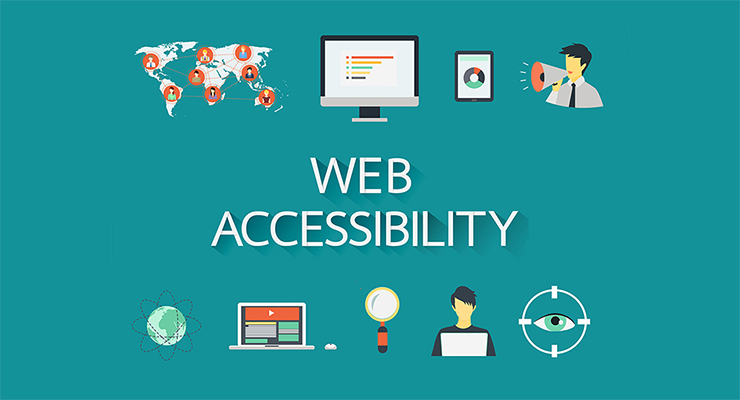Can a person with a disability use your website? This question has become a critical one to ask as we move forward with new standards for web design. Nearly 1 in 5 people in the U.S. report having a disability, and experts estimate that currently over 85% of websites are not fully accessible to disabled users.
The world’s daily use of the web is only increasing, and we need to be sure users with disabilities are not left behind. It’s important to be sure your site is up to current standards and meets requirements.
What exactly is web accessibility?
The goal of making a website accessible is to be sure users with disabilities can effectively use the site. Any disability that is relevant to using the web needs to be considered, including visual, auditory, cognitive, and neurological.
Voluntary web accessibility principles were created through the World Wide Web Consortium, an international community who develops key standards to ensure the web grows in a sustainable way into the future. It is a group of member organizations, full-time staff, and web professionals who are dedicated to working together to determine best web practices and to offer a common resource for protocols and guidelines for web designers worldwide. The group founded the web accessibility initiative (WAI) – guidelines that are widely regarded as the international standard for web accessibility.
Why do I need my site to be accessible?
In general, for all businesses and organizations, it is considered good practice to have an accessible website. As your site is likely your company’s “face” and main communication tool, it should be inclusive to all users. Don’t leave a bad impression with a prospective customer with a disability who can’t use the site. You may be missing out on potential connections or sales because of a bad experience.
Making your site accessible could also boost your SEO. Google has begun rewarding sites that prioritize accessible design and development with higher search engine rankings.
At some point soon, the government will likely enforce ADA accessibility standards for all companies who do business on the web. They have already listed the Web Accessibility Standards as guidelines for federal agency sites. Taking steps now towards compliance will likely reduce headaches down the road when stricter rules come into play.
What small steps can I take today to make my website more accessible?
There are a few common accessibility issues that are easy to recognize:
- Not enough contrast between text and page background
- Small text size
- Using color to inform
- Not providing text alternatives for any photo and video content
- Presenting information or content in a way that is not predictable or standard
It’s important to remember that accessibility isn’t only about the technical functioning of the website. It’s also about how the content is written, navigation clarity, and captioning of videos.
Check out W3’s tips for how to get recognize small changes to be made:
https://www.w3.org/WAI/eval/preliminary.html
What else can I do to take steps towards compliance with web accessibility standards going forward?
- For a large, complex site, its best to run an audit to check on accessibility issues throughout. It could also be beneficial to hire a consultant who can help you determine which adjustments are needed.
- Educate staff on what accessibility is and why it’s important. Anyone who writes for the website or edits content should have an understanding of best practices and make sure they are incorporated into new content and design going forward.
- If a website redesign is on the horizon, be sure your design firm has experience with accessibility standards and understands how the issue will evolve into the future. This is a great way to set your company up for the best long-term web development strategy possible.
- Once you feel confident about the changes made, create a regular schedule of checks or audits to make sure you’re up to speed. Standards will continue to evolve with time.
Learning more about web accessibility and implementing as many changes as possible is a great idea no matter the size and scope of your company. As the number of people with disabilities increases and our daily use of the web skyrockets, it’s imperative to create digital environments that are inclusive to all.
Do you have further questions about accessibility? Need help making your site accessible and want a long-term strategy focused on compliance success? Contact Greenleaf Media to help make an accessibility plan for your site.
